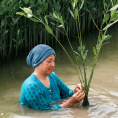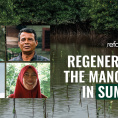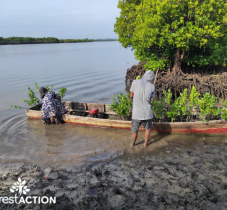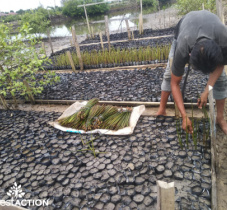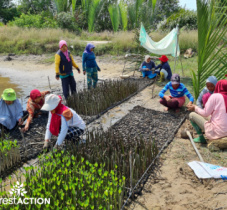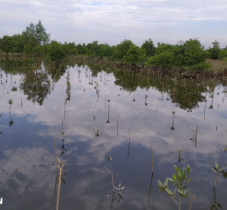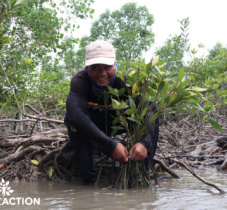Project description
The Aceh project in Indonesia aims to train the new generation of foresters in the restoration of mangroves, a key ecosystem of inestimable wealth.
The project at a glance
Number of trees to be planted: 375,000
Planted species: mangroves (Rhizophora apiculata, Avicennia marina, Rhizophora mucronata, Soneratia alba)
Type of project: restoration of degraded mangroves
Planting period: between February and June
Context
In Indonesia, the forest is disappearing twice as fast as in the Amazon : the equivalent of the surface of a football field is destroyed every ten seconds, which represents 840 000 hectares of forest per year. The Indonesian forest is however a very rich source of biodiversity. It is home to 10% of the world's plant species, 12% of mammal species, 16% of reptile species and 17% of bird species.
The province of North Sumatra is particularly affected by deforestation. In 1987, the province had 200,000 hectares of mangroves. Today, less than half of it remains with only 83 000 hectares. This massive deforestation is mainly due to anthropic pressure: the mangrove is converted into areas for intensive shrimp and fish farming, and illegally cut down to make firewood or charcoal.
The restoration project
The project will restore the mangrove in areas that have been degraded or deforested.
Once the plots have been identified, the plantations are carried out by involving the local communities. From the collection of propagules (mangrove seeds) to the realization of the plantations and their follow-up, the communities are trained and integrated into the project. The project is led by professors and managers experienced in mangrove restoration who accompany the new generation of foresters to train them in these techniques.
In parallel, assistance for the development of the green economy is being implemented. The objective is to improve and diversify the income of the project's beneficiaries. The development of dyeing activities, production of mangrove honey or ecotourism can be sustainable alternatives to illegal logging.
The benefits of the project
Mangroves have the ability to control seawater intrusion, reduce salt content, create a root structure to hold the coastline and improve the physical and chemical properties of the soil through litter decomposition. The large-scale increase in mangrove cover will increase its physical function as a guardian of shoreline stability, anti-abrasion, soil salinization control, mud and sediment trapping, flood control and water quality maintenance.
Mangroves actually support the economy of coastal communities, as they are a source of livelihood for them, the majority of their activities being fishing. In addition, mangrove forests have an ecological function as a habitat for marine life, as a buffer for the protection of coastal areas, and protect from various threats of sedimentation, abrasion, seawater intrusion, as well as a spawning ground for fish living in the open sea.







